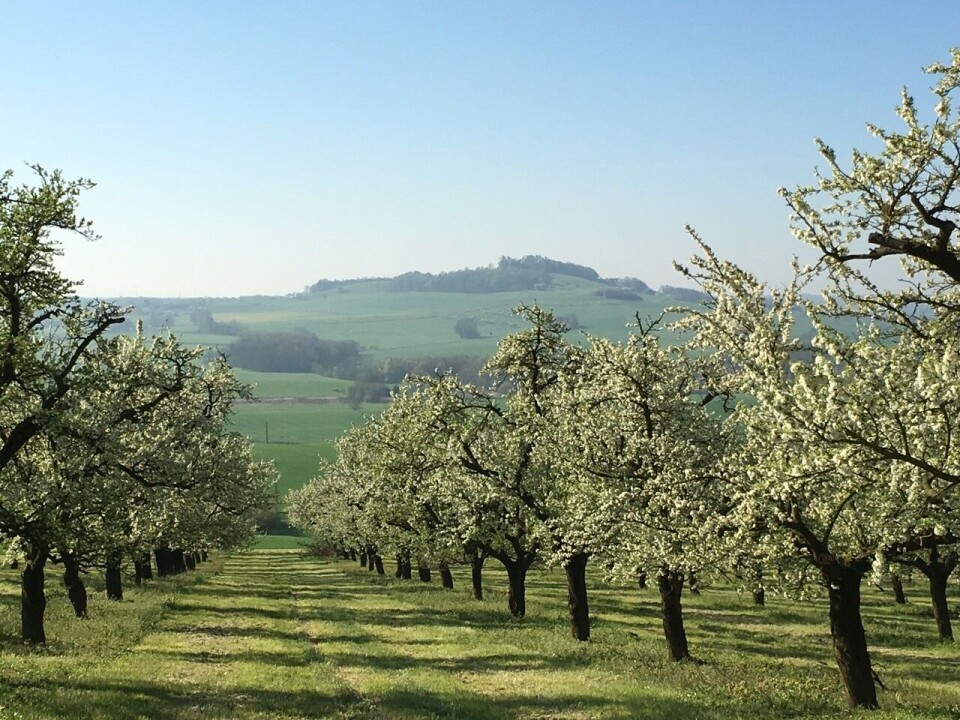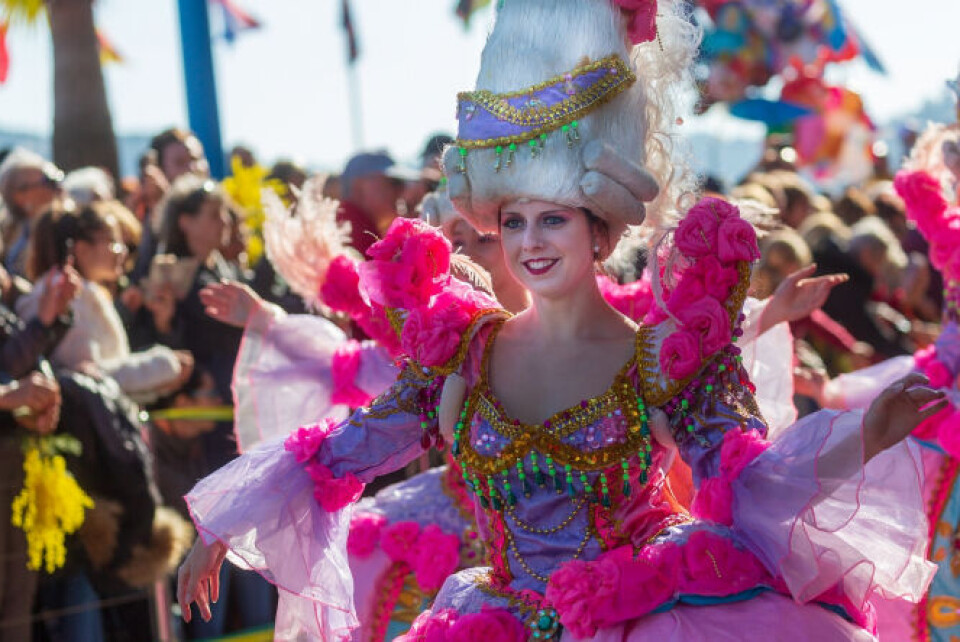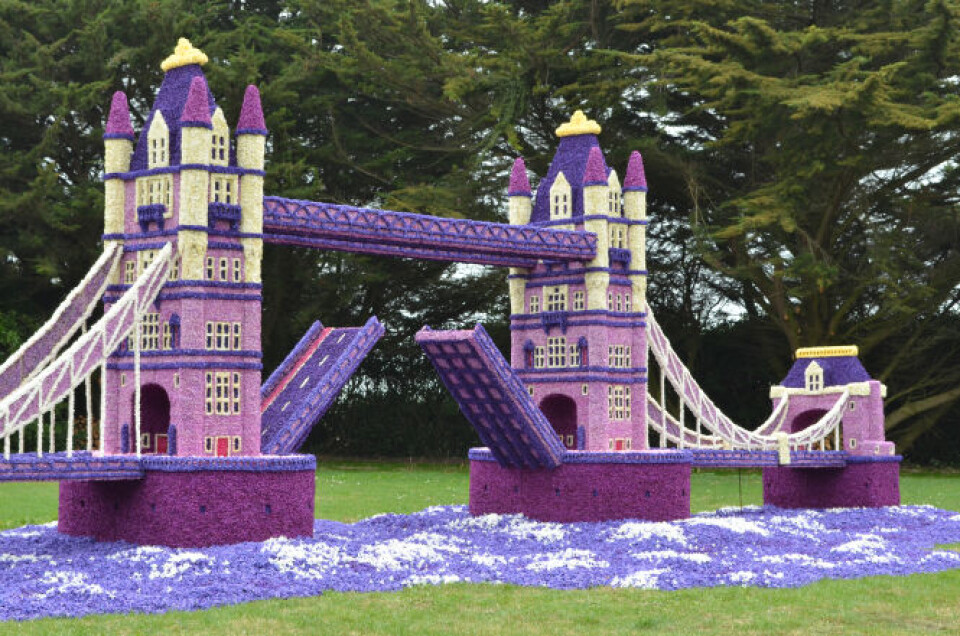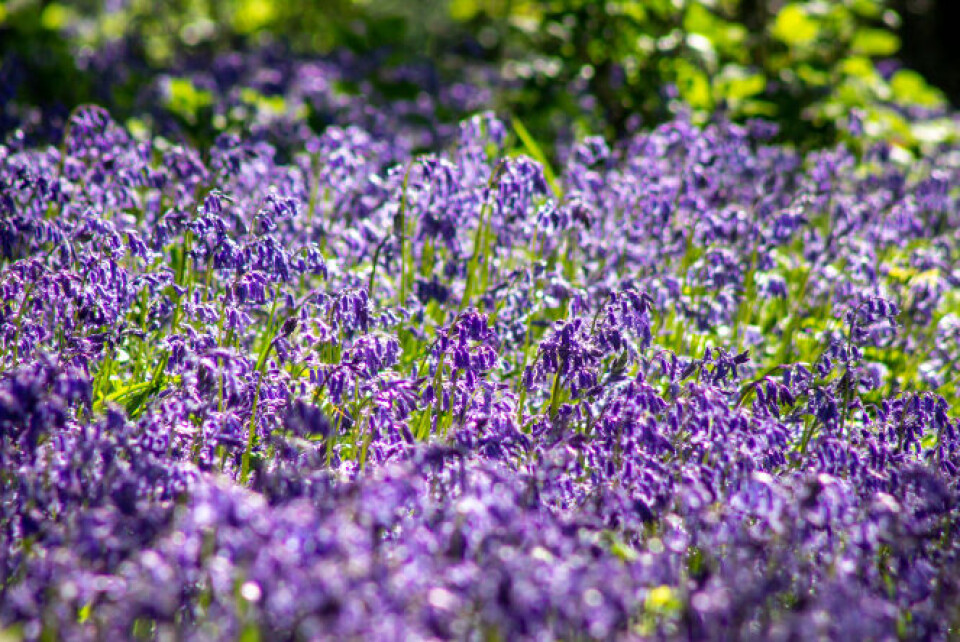-
Gardener's digest: reusing rainwater and April vegetable patch plans
Tips and tricks for your jardin in France, from sunloungers to swimming pool inspiration
-
Photos: forget Amsterdam - stunning images of France’s tulip fields in bloom
These spots in south-east France are showcasing a rainbow of bright spring flowers
-
What you should do to your garden in France in spring
Weeding, pruning, sowing, preparing the lawn…here is how to welcome sunnier days
Follow your nose on a scent-sational tour of France’s spring flowers
Explore the national and regional floral specialities of France, and sniff out the best flower festivals and horticultural events taking place around the country this spring

The delights of spring in France include flowers blooming in every park, garden or window box, encouraged by the Concours Villes et Villages Fleuris (www.villes-et-villages-fleuris. com).
Certain flowers like geraniums appear all over the ‘Hexagon’, and others are associated with particular regions, like lavender in Provence and edelweiss in the Alps.
Flowers play an important role in French culture.
The fleur-de-lis (iris) is the national flower of France; a stylised version was used to represent French royalty and is still the national emblem, representing perfection, light, and life.
The bleuet (cornflower) is associated with raising money for WW1 veterans, and the chrysanthème (chrysanthemum) with All Saints Day.
There is also an entire symbolic language for cut flowers (begonias for sincere friendship and heather for lasting love, for example).
‘Floriculture’ provides 150,000 full time jobs
Although the majority of cut flowers sold in France are imported, ‘floriculture’ (the production of cut flowers for retailers and florists) is thriving, with 3,200 growers cultivating more than 6,000 acres of land, some 2,000 acres of which is under glass.
This is in addition to the businesses producing potted indoor plants, bulbs and seeds, and plants for garden centres.
Altogether the sector totals 43,000 businesses providing 150,000 full-time jobs.
Every year on 1 May, the French spend around €25.8 million on sprigs of muguet–Lily of the Valley (mainly grown around Nantes), which they exchange for good luck.
On that day only, unlicensed street sellers are allowed to sell wild muguet if they don’t stand too near a florist’s shop.
Violets, mimosa, sunflowers and tulips
Violets are associated with Toulouse, where they have been grown since they arrived from Parma in Italy, brought it is said by a Napoleonic solider for his sweetheart.
The local violet-flavoured sweets are famous all over France.
Violets were first crystallised in Toulouse in the early 20th century, and the scent was developed in the 1930s.
Violet liqueur followed along with ‘violet seller’ dolls.
Nowadays, violets are added to mustard, soap, chocolate, face cream and jam, and every February there is a two-day Fête de la Violette in the central Place du Capitole.
Mimosa was introduced from Australia in the mid-1800s, and is now widely cultivated along the Mediterranean coast as an ingredient for the perfume industry.
In many parts of France it is traditional to give mimosa on Mothers’ Day.
In 1929, when winter temperatures on the Riviera plunged to -9ºC, the crop was destroyed for two years running, causing widespread financial hardship.
When the harvest was back to normal in 1931, the town of Mandelieu-la-Napoule organised a celebration which has now evolved into a five-day Mimosa Festival every February, including parades of decorated floats, marching bands, street orchestras, mimosa queens and dancing.

Sunflowers have been grown extensively in western France since the 1960s, and France now produces 1.2 million tonnes of them a year, 16% of the European total.
Sunflowers do not need much care to thrive, but the heads are 44% oil and 18% protein.
The leftovers from making vegetable oil for human consumption are turned into nutritious animal feed.
Sunflowers are also used in the production of biodiesel, paint, ink, and asphalt.
Their beautiful flowers, waving their heads across the rolling fields, can be seen all over Poitou-Charentes, Pays de la Loire, Bourgogne, Nouvelle Aquitaine and Occitanie.
Hundreds of thousands of tulip bulbs are grown in Haute-Provence, in an area stretching from Manosque to Forcalquier, “
Every year on 1 May, the French spend around € 25 million on sprigs of muguet–Lily of the Valley, which they exchange for good luck and every spring the blooms cover the fields in a rainbow of colours. (The mature bulbs are sold to growers in Holland.)
Kaandorp, a large bulb producer at La Torche, near Plomeur (Finistère) constructs a massive sculpture every year covered with tulips and hyacinths.

Flowers by the millions
One year it was Tower Bridge and last year it was a Russian cathedral.
It takes a team of 30 volunteers a whole week to complete, using around a million flowers.
The unveiling marks the opening of their fête des fleurs, from 11 March to 10 April, 2023.
During the festival, visitors can admire an ocean of blooming flowers (the company produces 14 million bulbs a year, which are shipped to Holland in 60 lorries) on board a petit train.
Their Bulborium display is open from 5 March to 21 April, and their Mosaïque en Fleurs de Jacinthes (free entrance) from 18 March to 21 April, 2023, is themed around Harry Potter.
Also in Finistère, the Parc Botanique de Cornouaille in Kerlever near Combrit, has been awarded the Jardin Remarquable label by the Minister of Culture.
Stretching over 45,000m², this English-style park was created in 1981 and showcases plants collected from all over the world.
It contains gardens representing Chile, Japan, Canada, Siberia, Costa Rica and China.
In springtime the rhododendron alleyways are heavy with flowers.

They also have hothouses where you can buy exotic plants.
The area also boasts non-floral attractions.
Flowers and… heavy metal
At the beginning of May, Le Courts Of Chaos is an annual heavy metal festival which runs over a weekend, hosting sixteen French bands plus European guest bands.
From mid-May, the Goéland Masqué book festival in Penmarc’h has author talks, concerts, debates, writing competitions, readings and films.
During the same period there is also a festival of the sea at l’Ile-Tudy called Si la Mer Monte (If the Sea Rises), offering exhibitions, concerts and street cabaret.
In Flanders (Nord), the Tourist Office at Saint-Jans-Cappel has details of their Sentier des Jacinthes which commemorates the life of Marguerite Yourcenar, the novelist and essayist, who in 1980 became the first woman elected to the Académie Française.
Her father came from the area, and she was known to be fond of hyacinths.
The 6km route passes the Ferme Flamande, the Musée Marguerite Yourcenar, and her childhood home, La Villa Marguerite Yourcenar, which is now a cultural centre and writers’ retreat.

Bluebells, daffodils, poppies, narcissus, orchids, anemones and yellow gentians
Head south to the Pyrenees to admire the bluebell woods from the Pays Basque to the Col de Jau (Aude).
For three weeks every spring, the beech woods around Bagnères-de-Bigorre are carpeted with bluebells illuminated by the sunlight slanting through the naked branches.
Admire daffodils from March in the lowlands of Auvergne, around the Puy de Sancy, and on the volcanic plateau of Cézallier.
The Plateau de l’Aubrac, straddling Lozère, Aveyron and Cantal at altitudes between 1,100 and 1,400 metres, is something of a botanical paradise.
The mountainsides come into flower a little later than the slopes lower down.
Here, daffodils start in April, followed by narcissus, and then orchids, anemones and yellow gentians in the summer.
The tourist office at Laguiole has information about hiking in the area.
While there, explore the traditional knife-makers’ workshops, admire the statue of an Aubrac bull, and order delicious aligot (potatoes mashed with cream and local cheese).
If you visit Aubrac, you must try the famous Tarte aux Fruits Rouges de Germaine.
Poppies can be seen all over France, but are particularly spectacular in Luberon, where they grow wild in the cereal fields and along the verges.
Poppies grow where other flowers do not, on recently ploughed earth.
Easy to grow, the flowers fade within a day of being picked, but the petals can be used to make herbal tea, and the poppy seeds can be used as a sedative.
In the language of flowers it symbolises relief or inconstancy. It can also mean hesitation, because of the way the flowers sway in the softest summer breeze.
Plum blossom season
The Mirabelle plum blossom season in Lorraine is fleeting but beautiful.
For a week or so in April, the orchards are covered in white blossom looking as if late snow has fallen.
The Colline de Sion-Vaudémont, just south of Nancy, offers fabulous views over the surrounding countryside, including the orchards.
The Lorraine Tourist Office has a selection of hiking itineraries to see the plum blossom.
From Madine-Heudicourt, there is a 78km cycle path leading through the orchards and vineyards, and the Lac de Madine offers a great bathing spot for cooling off when you get back.
To find out more about the tasty little yellow plums, visit the Maison de la Mirabelle in Rozelieures, which has loads of information, with films, a sound-and-light show in the distillery, plus tastings of various products.
You can even calculate your weight in numbers of Mirabelles, should you feel the need.
There is also a display about the development of a perfume called l’Or du Verger (Gold of the Orchard) made from plum flowers.
In fact, there is a whole range of personal hygiene products, including body oil, moisturising cream, and soap.
Ask for directions about the various paths leading away from the Maison de la Mirabelle through the orchards.
Roses, cherry blossom and irises
Roses, with their intoxicating colours and scents, are an abiding passion for many gardeners, and a good place to admire them is at the Roseraie du Val-de-Marne in L’Haÿ-les-Roses (in the southern suburbs of Paris) from early May onwards.
The rose garden is owned and managed by the département of Val-de-Marne.
Constructed in 1899, it contains more than 11,000 rose plants of 2,900 different species and varieties.
The climbing roses around the miroir d’eau (a very shallow mirror of water) are particularly spectacular.
Competing in beauty are the roses in the Parc de Bagatelle, the botanical gardens in the Bois de Boulogne, with 1,200 different species of roses growing amongst little water features and bridges, rocks and caves, over archways and walks.
There is also a Chinese pagoda, and in the summertime, concerts of classical music.
In the south, the gardens of the Musée International de la Parfumerie de Grasse are full of cherry blossom, roses, irises, and other scented flowers.
Related articles
Take a picnic beneath pink trees this spring as Paris turns Japanese
Fantastical French pebble palace among 10 most-Googled cultural sites
National parks in France warn visitors to respect flora and fauna
























